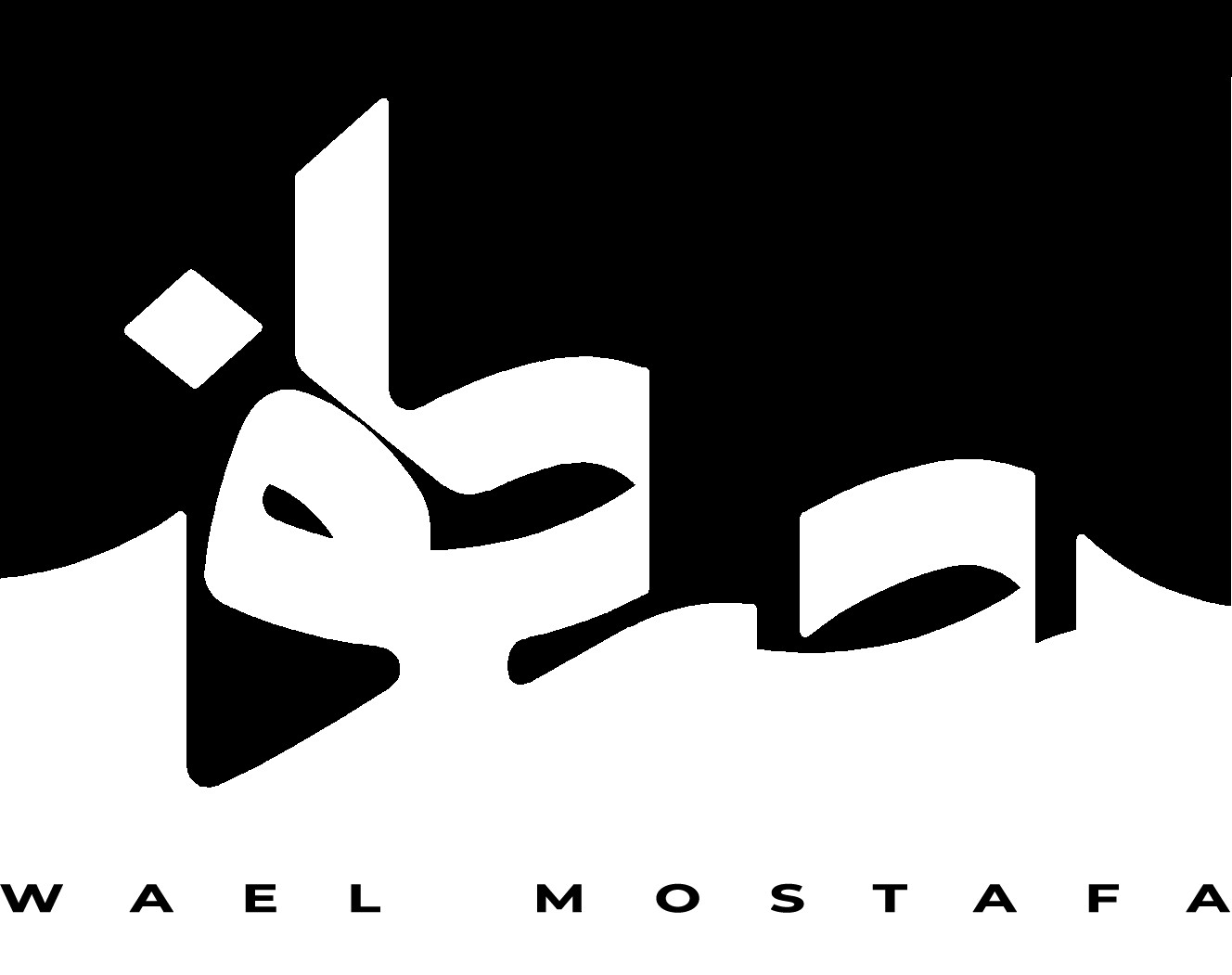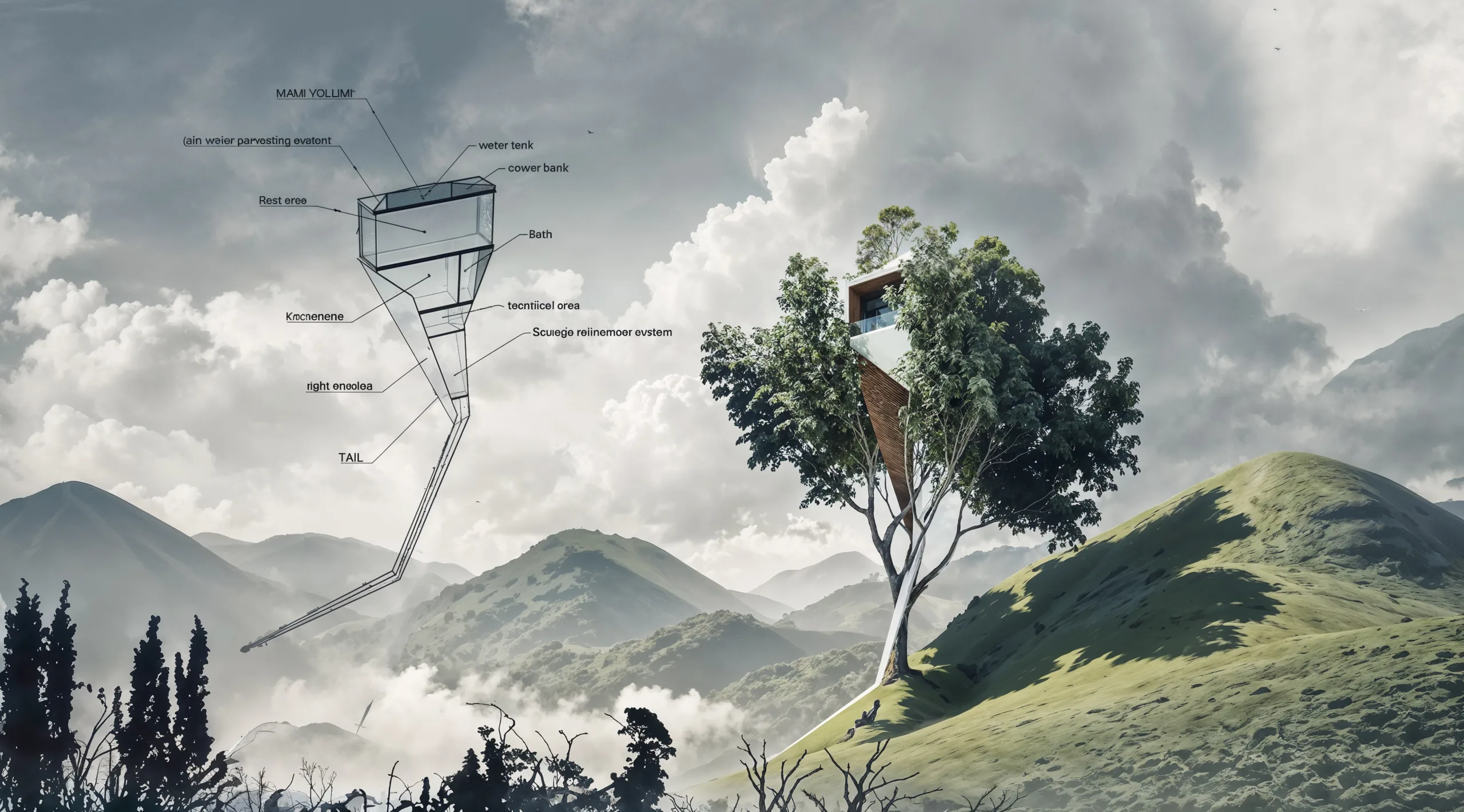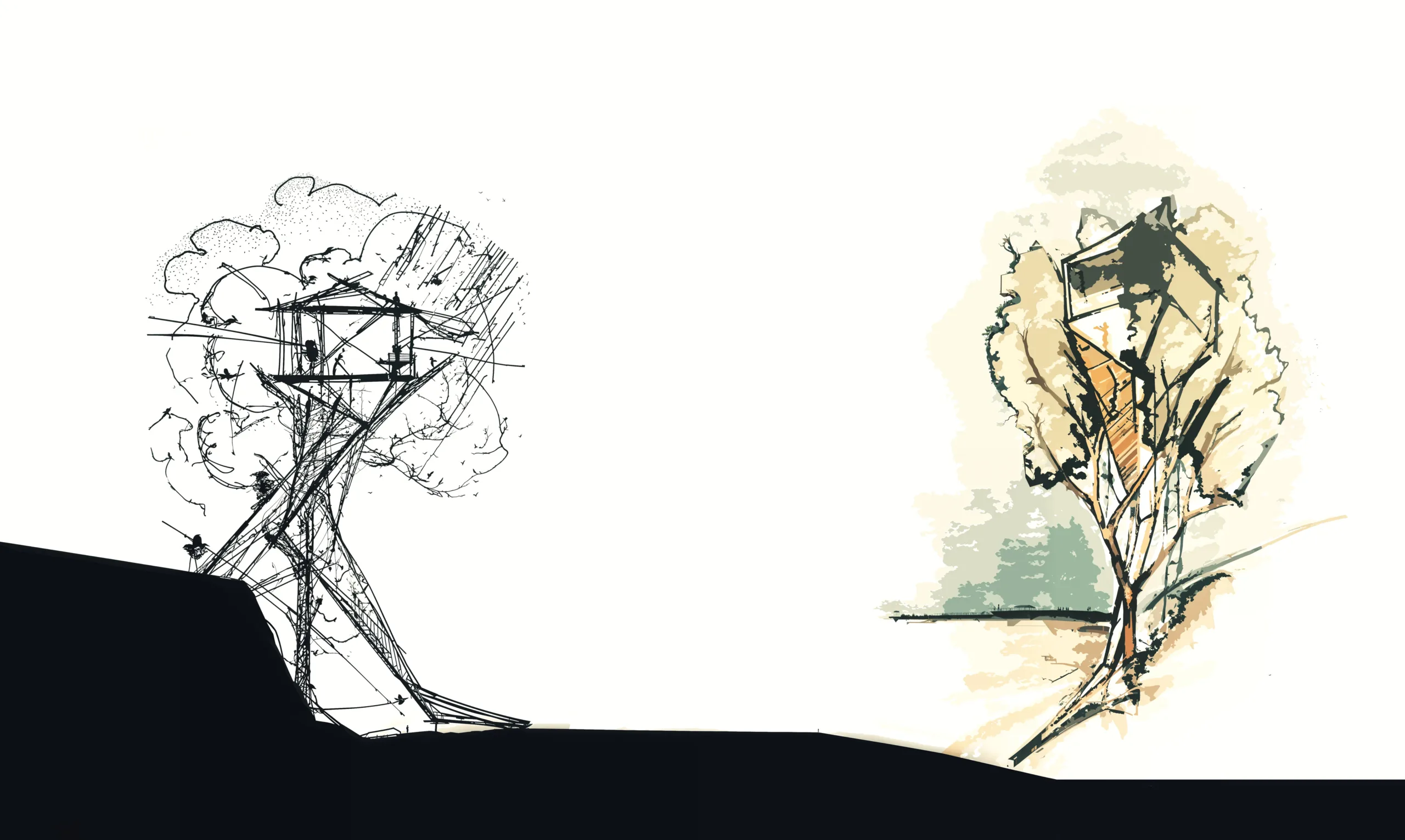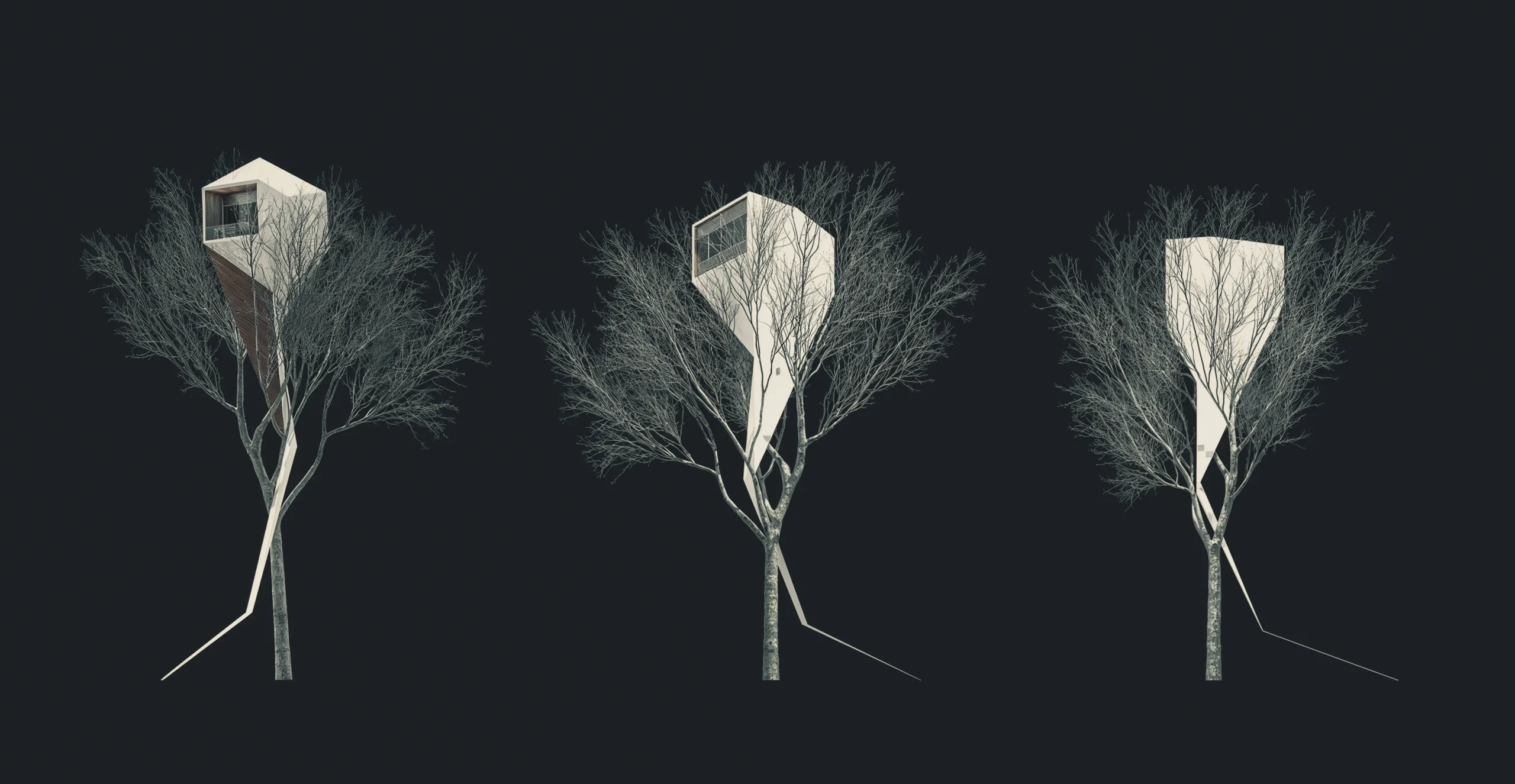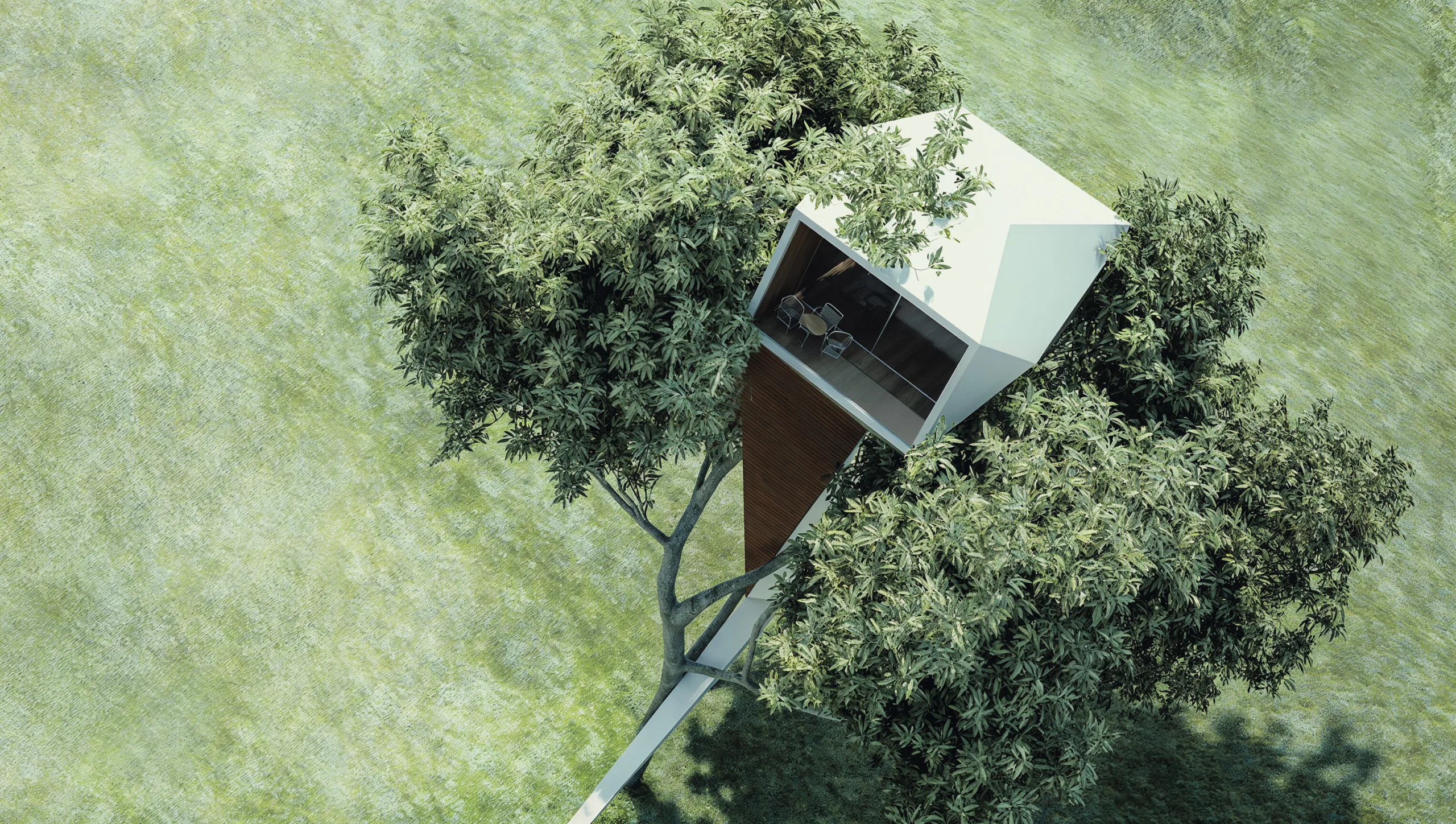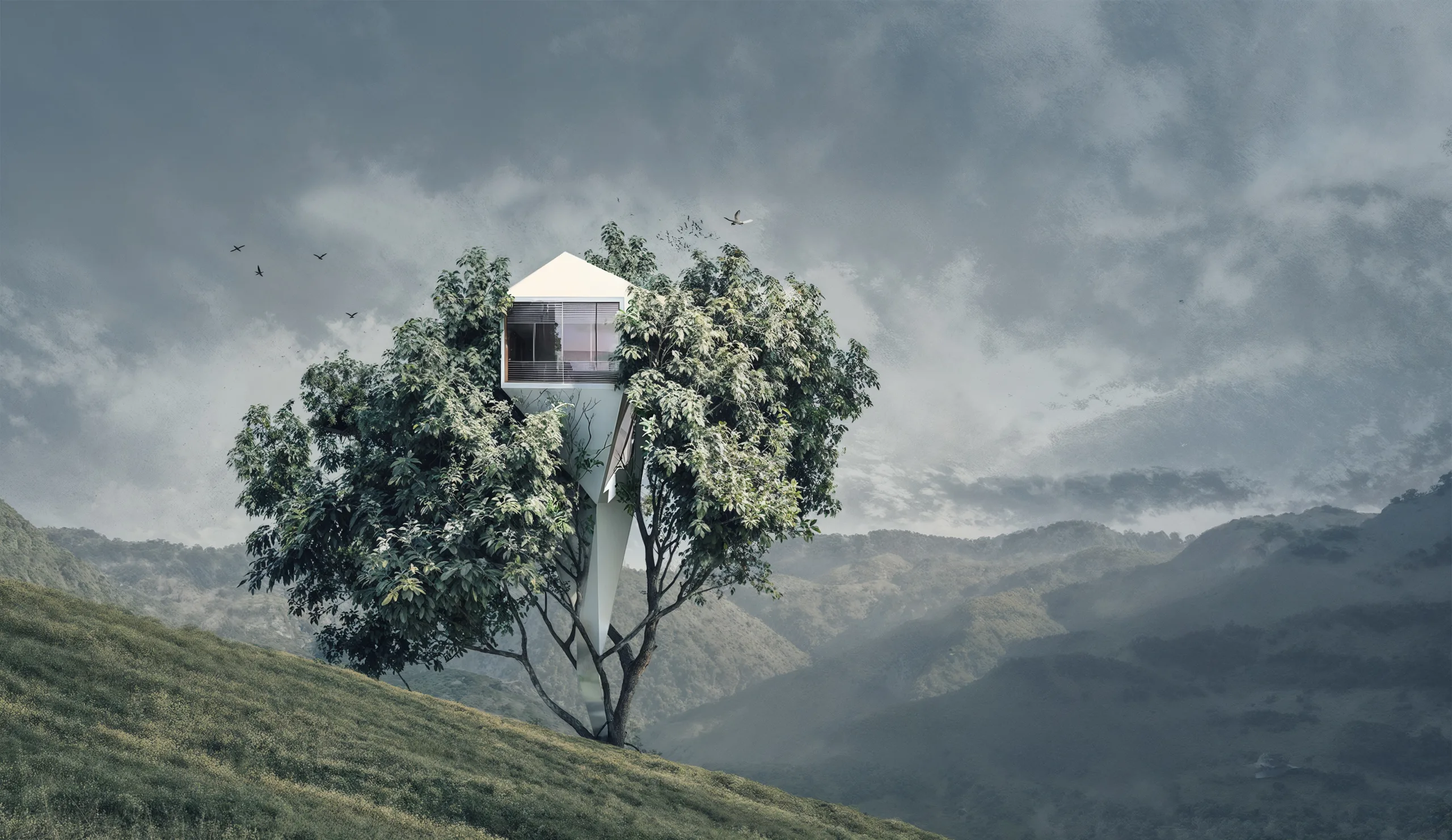
Y Pod is a conceptual treehouse mounted on an oak tree, blending biomimicry with sustainable design. Suspended 12–20 meters above ground, it features a transparent facade, a rest area, and essential facilities. Accessible via a treetop ladder, it utilizes rainwater harvesting and solar panels, redefining elevated, eco-friendly living.
Y Pod is a conceptual treehouse mounted on an oak tree at a height ranging between 12 and 20 meters above the ground, offering a panoramic view through two main transparent facades. The design integrates natural elements with modern architecture, drawing inspiration from organic forms such as lizards and snakes, as well as geological shapes like rocks, giving it a structure that harmonizes with its surroundings.
As a concept, Y Pod explores innovative approaches to elevated living, blending biomimicry with sustainable architecture. It consists of two main components: the primary volume and the tail. The primary volume is a distorted cube that rests on the tree’s crown, supported by its main branches, while the tail extends along the smaller branches until it reaches the ground. Access to the pod is through a 20-meter treetop ladder, making the entry experience an adventure in itself. The main volume includes a rest area and an open balcony that enhances the connection with nature, while the tail accommodates essential facilities, including a bathroom, kitchenette, and a technical zone housing a power bank and water tank.
Designed for resilience against various weather conditions, the structure utilizes acrylic sheets on the roof for protection, along with a rainwater harvesting system that supplies water sustainably. Integrated photovoltaic panels generate the necessary energy, ensuring self-sufficiency and minimal environmental impact. Y Pod redefines the possibilities of conceptual treehouse design by offering both refuge and immersion in the natural landscape, challenging conventional notions of architecture and space.
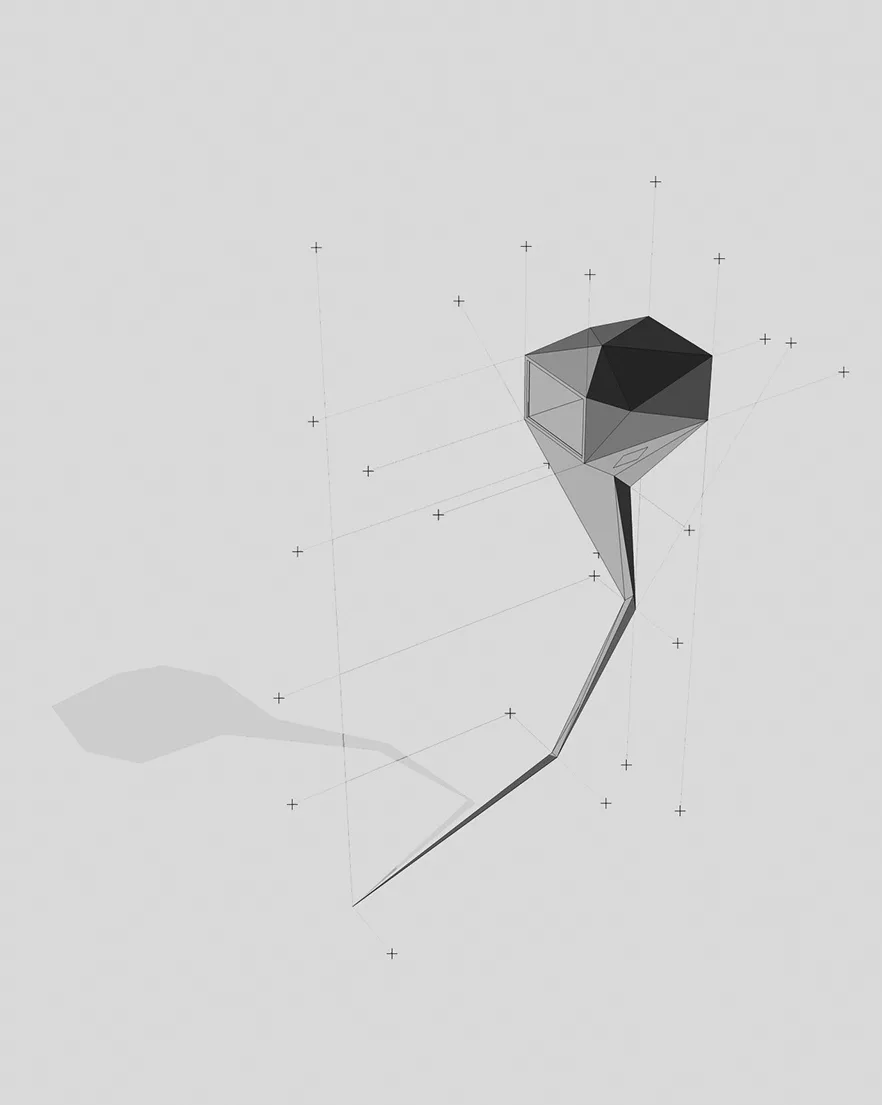
The main volume of Y Pod is supported within the tree by distributing loads across its strong primary branches, allowing the structure to rest securely without harming the tree. The design incorporates carefully placed connection points with the tree’s canopy to ensure stability, while the tail acts as an additional support element extending to the ground, helping to balance the structure and reduce pressure on the branches. This extension also enhances the overall stability by providing a secondary load-bearing point. Additionally, the design likely utilizes flexible attachment techniques to minimize the impact of dynamic loads, such as wind or user movement inside the pod, making Y Pod a harmonious blend of innovative engineering and environmental sensitivity
